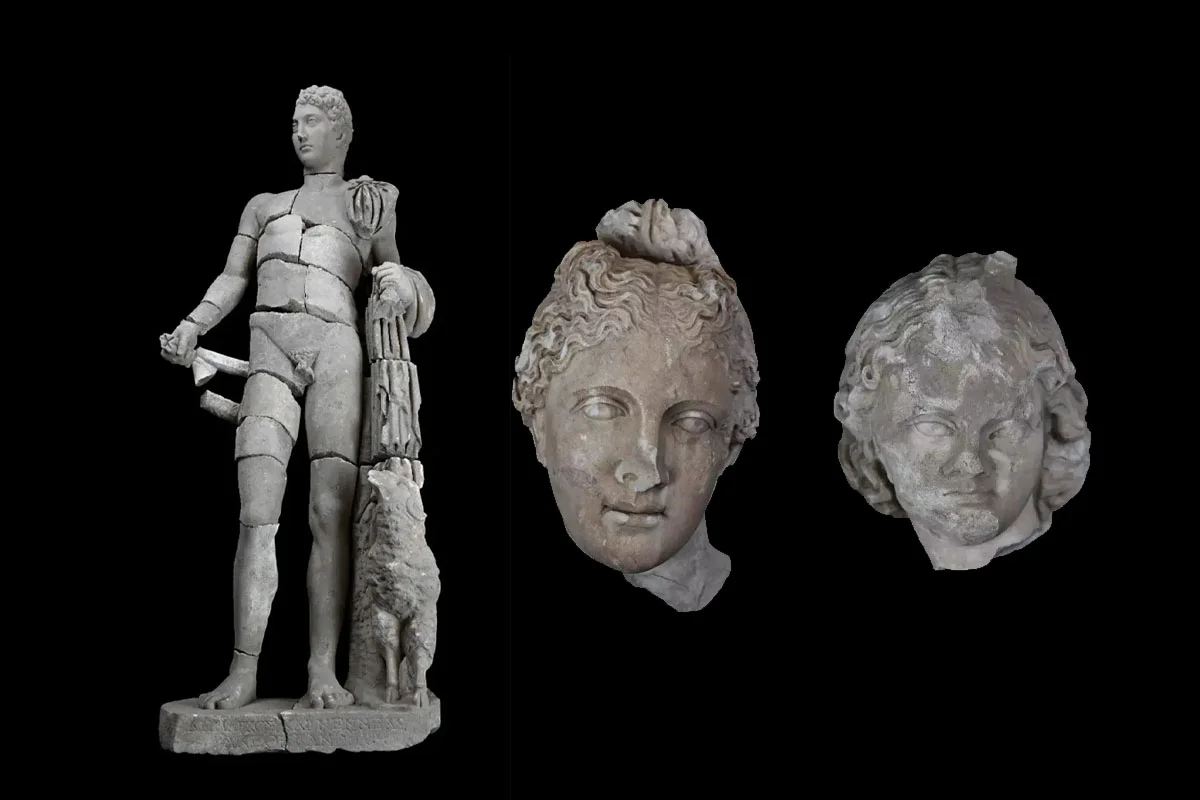Excavations in ancient Aspendos, part of the “Heritage to the Future” project, have discovered a statue depicting the image of Hermes and fragments of sculptures from the Ancient Greek pantheon of dieties.
Aspendos was an ancient Greco-Roman city in Turkey’s Antalya province. The city was anexed by the Roman Republic in 190 BC, emerging as the third city in the Roman province of Pamphylia Prima.
Aspendos is reknowned for having the best-preserved theatre of antiquity as well as a 19 km-long aqueduct with a preserved inverted siphon. Other substantial monuments includes the remains of a stadium, baths, basilica, agora and nymphaeum.
Recent excavations commissioned by the Ministry of Culture and Tourism have found a statue depicting Hermes, the winged messenger of the gods and the god of travellers, thieves, and commerce.
Sculptered from marble, the statue was discovered among the ruins of a monumental fountain located adjacent to the south entrance gate. A study of the area also discovered the marble heads of Aphrodite and Eros, in addition to fragments of statues depicting Artemis and Nemesis.
According to a press statement by the Ministry of Culture and Tourism, the statue measures 1.65 metres in height and is shown dressed in a cloak and holding a purse and a kerykeion (staff). Next to the left foot is a depiction of a ram, a metaphor in Ancient Greek culture of strength and courage.
Based on the stylistic features, archaeologists have dated the sculpture to the Roman Imperial period between the late 2nd century AD to the early 3rd century AD.
Minister Ersoy said, “In Aspendos, the silent witness of time, figures buried for centuries have come to light. I would like to thank our employees who contributed to the project and hope that these works will be beneficial to the cultural and tourism life of our country.”
Header Image Credit : Ministry of Culture
Sources : Hurriyet





